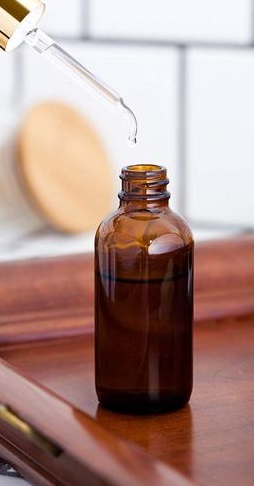
A Boston round bottle, or Winchester bottle, is a strong, heavy bottle commonly used in the drug and chemical industries. It is often made of amber (brown) glass (to filter out UV light) but can also be made of plastics. [2]

A Boston round bottle, or Winchester bottle, is a strong, heavy bottle commonly used in the drug and chemical industries. It is often made of amber (brown) glass (to filter out UV light) but can also be made of plastics. [2]
The "Winchester quart" bottle first appeared in the UK in the 19th century with a capacity of 2 imperial quarts (2.273 litres). [3] At the time, a system of dry capacity measures known as "Winchester" was still in use. The Winchester bushel is still used in the US. However, the Winchester quart bottle has no relation whatsoever to any other units called "Winchester". In the 20th century, the Winchester Quart was metricated to two and a half litres. [4] [5]
A "Boston round" has a cylindrical shape without a handle and a short curved shoulder. It is threaded for closing with a screw cap.

The gallon is a unit of volume in British imperial units and United States customary units. Three different versions are in current use:

The litre or liter is a metric unit of volume. It is equal to 1 cubic decimetre (dm3), 1000 cubic centimetres (cm3) or 0.001 cubic metre (m3). A cubic decimetre occupies a volume of 10 cm × 10 cm × 10 cm and is thus equal to one-thousandth of a cubic metre.
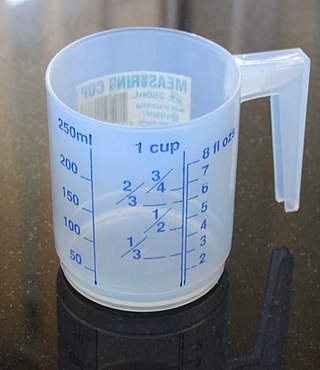
Volume is a measure of three-dimensional space. It is often quantified numerically using SI derived units or by various imperial or US customary units. The definition of length (cubed) is interrelated with volume. The volume of a container is generally understood to be the capacity of the container; i.e., the amount of fluid that the container could hold, rather than the amount of space the container itself displaces.

In recipes, quantities of ingredients may be specified by mass, by volume, or by count.
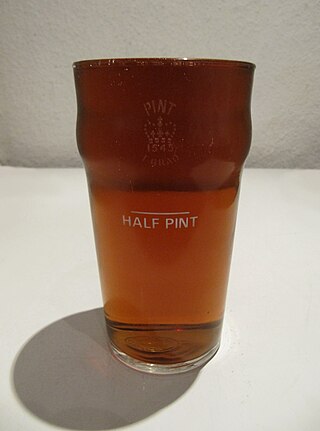
The pint is a unit of volume or capacity in both the imperial and United States customary measurement systems. In both of those systems it is traditionally one eighth of a gallon. The British imperial pint is about 20% larger than the American pint because the two systems are defined differently. Almost all other countries have standardized on the metric system, so although some of them still also have traditional units called pints, the volume varies by regional custom.
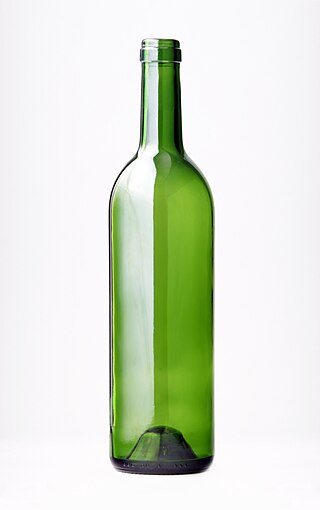
A bottle is a narrow-necked container made of an impermeable material in various shapes and sizes that stores and transports liquids. Its mouth, at the bottling line, can be sealed with an internal stopper, an external bottle cap, a closure, or induction sealing.
The quart is an English unit of volume equal to a quarter gallon. Three kinds of quarts are currently used: the liquid quart and dry quart of the US customary system and the imperial quart of the British imperial system. All are roughly equal to one liter. It is divided into two pints or four cups. Historically, the exact size of the quart has varied with the different values of gallons over time and in reference to different commodities.

A carboy, also known as a demijohn or a lady jeanne, is a rigid container with a typical capacity of 4 to 60 litres. Carboys are primarily used for transporting liquids, often drinking water or chemicals.

A fluid ounce is a unit of volume typically used for measuring liquids. The British Imperial, the United States customary, and the United States food labeling fluid ounce are the only three that are still in common use, although various definitions have been used throughout history.
The spread of metrication around the world in the last two centuries has been met with both support and opposition.

A glass bottle is a bottle made from glass. Glass bottles can vary in size considerably, but are most commonly found in sizes ranging between about 200 millilitres and 1.5 litres. Common uses for glass bottles include food condiments, soda, liquor, cosmetics, pickling and preservatives; they are occasionally also notably used for the informal distribution of notes. These types of bottles are utilitarian and serve a purpose in commercial industries.
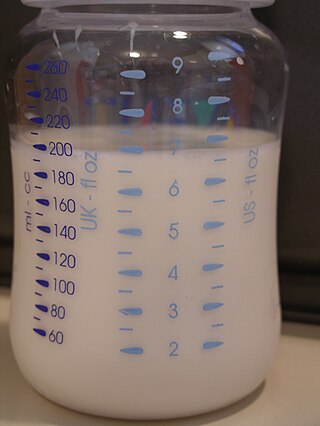
Both the British imperial measurement system and United States customary systems of measurement derive from earlier English unit systems used prior to 1824, that were the result of a combination of the local Anglo-Saxon units inherited from Germanic tribes and Roman units.

A bail handle, or simply bail, is a handle that consists of an open loop that moves freely within two fixed mounts or ears. Several designs are available: bails are typically made of metal (wire) or plastic. It is a type of package handle which may be used for carrying an item, such as a tin can or bucket; or kettle, or as a drawer pull. A bail handle can also be used to hang an item such as a pharmaceutical bottle potted plants, etc.
Winchester measure is a set of legal standards of volume instituted in the late 15th century (1495) by King Henry VII of England and in use, with some modifications, until the present day. It consists of the Winchester bushel and its dependent quantities, the peck, (dry) gallon and (dry) quart. They would later become known as the Winchester Standards, named because the examples were kept in the city of Winchester.

Pharmaceutical packaging is the packages and the packaging processes for pharmaceutical preparations. It involves all of the operations from production through drug distribution channels to the end consumer.

Reagent bottles, also known as media bottles or graduated bottles, are containers made of glass, plastic, borosilicate or related substances, and topped by special caps or stoppers. They are intended to contain chemicals in liquid or powder form for laboratories and stored in cabinets or on shelves. Some reagent bottles are tinted amber (actinic), brown or red to protect light-sensitive chemical compounds from visible light, ultraviolet and infrared radiation which may alter them; other bottles are tinted blue or uranium green for decorative purposes -mostly vintage apothecary sets, from centuries in which a doctor or apothecary was a prominent figure. The bottles are called "graduated" when they have marks on the sides indicating the approximate amount of liquid at a given level within the container. A reagent bottle is a type of laboratory glassware. The term "reagent" refers to a substance that is part of a chemical reaction, and "media" is the plural form of "medium" which refers to the liquid or gas which a reaction happens within, or is a processing chemical tool such as a flux.

In technical usage in the shipping industry, a pail is a type of cylindrical shipping container with a capacity of about 3 to 50 litres. It can have straight or slanted sides and usually has a handle or bail.
A number of different units of measurement were historically used in Cyprus to measure quantities like length, mass, area and capacity. Before the Metric system, the Imperial system was used. In between 1986-1988, metric system was adopted in Cyprus.
A number of units of measurement were used in South Africa to measure quantities like length, mass, capacity, etc. The Imperial system of measurements was made standard in 1922 and the metric system was adopted in 1970.

A growler (US) is a glass, ceramic, or stainless steel bottle used to transport draft beer. They are commonly sold at breweries and brewpubs as a means to sell take-out craft beer. Rarely, beers are bottled in growlers for retail sale. The significant growth of craft breweries and the growing popularity of home brewing has also led to an emerging market for the sale of collectible growlers. Some U.S. grocery stores, convenience stores, bars and restaurants have growler filling stations.